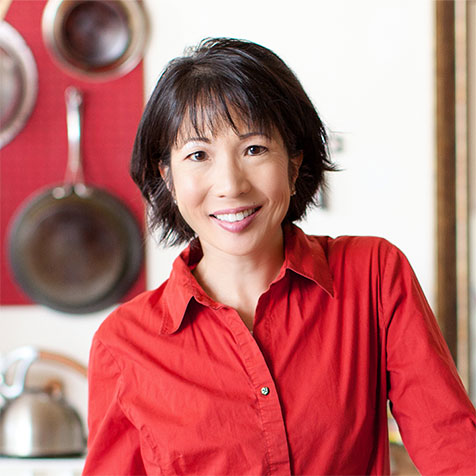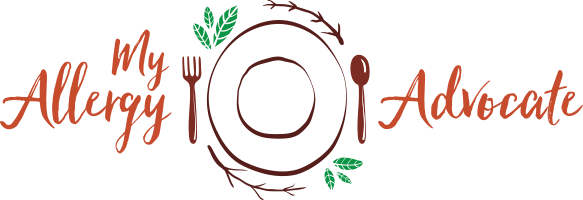Allergen Halloween FARE Sugar

FARE’s Teal Pumpkin Project is way to signal Trick-o-Treaters in your neighborhood that you have a non-food treat bowl for kids with food allergies. But did you know what else you are helping them sidestep? Sugar, and high processed foods.
As we draw near to Halloween and the ritual of Trick-or-Treating across America, I thought it was time for me to speak personally about two related subjects: a safe, allergen-free Halloween celebration, and the problem with our sweet tooth.
OK, please don’t hate me, and I am sharing with you both things you should know and want to know, yet I am a realist about the subject! Many of us would just as soon bury our heads in the sand if we have to hear one more person telling us that we can’t have that decadent slice of gluten-free pie, or we can’t have that piece of candy from the candy bowl that says, “gluten free, made with corn syrup.”
It’s time to reveal how my project here at My Allergy Advocate on WordPress.com is different than the average, run of the gluten-free mill blog about living the “free-from” dietary lifestyle.
Let me give you a moment. Open up a search bar on your computer or device’s browser, and type in the words, “gluten free blog”. Do it now. Don’t take my word for it. The top ten search results on Google should pull up some well-followed gluten-free bloggers. While each has a different style, they all have one thing in common. It’s that one thing that will likely keep me from ever having my blog up near the top (so I’m aiming for in the Top 20 later in 2017).
Do you know what it is?
Read more to find out if your guess is as good as my answer!
What They All Have In Common
What the first ten (and more!) gluten-free bloggers have in common is that they promote and/or are sponsored by a gluten-free product company, or they receive gluten-free high processed food products (see my description of what this is in the next section, below) regularly for review. Each of them is tasked to report about those products (or in the case of one of the bloggers, the products are her own), and to review them for their followers.
If they are transparent and write like professional food journalists, they give an honest review, including food safety issues, manufacturing facts, and personal observations and preferences about the food. They also will take pictures of the food products and promote them to their followers, including give-aways, recipes, and discounts on orders.
Gluten free writers, such as No Gluten, No Problem, rate high with me. Yet even they don’t talk much about the number one problem with gluten free food.
What these bloggers are not asked to do is reveal if they are currently experiencing health-related problems or challenges directly related to eating these foods on a regular basis. They don’t talk about the number one problem with gluten free processed foods. And to me, that’s disingenuous and potentially misleading.
If you don’t find a problem with that last paragraph, take a moment to think carefully about Paula Dean, the “Queen of Southern Cooking.” After eating her own food for her cooking show, she admitted well after the actual diagnosis that she had developed Type II Diabetes. Type II Diabetes symptoms, as we all know, is reversible when a person eats a low carbohydrate (read low sugar) diet rich in healthy fats and proteins, which allows the pancreas to return to secreting enough insulin to meet a more normal amount of sugar in the bloodstream.
While everyone could see that Ms. Dean was a heavy-set, rotund woman with a passion for Southern cooking, she also ate her own food. And then the food started doing what it would do in most bodies in those quantities: it made her grow heavy, and it made her pancreas quit producing enough insulin to meet the sugar demand in her body. Voila — Type II Diabetes. Fortunately for her, she went on to recreate her recipes, change serving sizes, and start dropping the weight. She lost about 35 pounds in 2015. However, there have been no updates in 2016, which makes me wonder if her health kick may have gone into a stall. This is tough thing, to be in the food industry, and then to need to be transparent after an announcement like this.
But why O why don’t we demand it from our food bloggers as well? Could it be that we don’t want to know? Or we don’t want to be told what we already know — that many (not all!) of those gluten-free high processed foods are full of unhealthy fats, preservatives, chemicals, salt, sugar, irritating ingredients, and are nutrient poor?
Very few of the top 10 most-followed gluten-free bloggers regularly show themselves in a full-body picture, or talk regularly about the health impact of eating gluten-free food products on a regular basis. While I am not here to “fat shame” anyone, I do think that if you’re going to follow someone else’s lead for what you put in your bodies, you have a right to observe the impact of those food choices on the people who promote them.
If not, it is no different that the big food giant CEO’s who sold foods to the world, but never stocked their own shelves with it. According to Michael Moss’ book, “Salt Sugar Fat” (2015), food scientists and food giant CEO’s revealed that they did not eat the foods that they engineered and grew wealthy from, because they knew that these foods were not healthy for them. Why? Because they were filled with unhealthy fats, excessive amounts of salt to cover bad aftertastes and synthetic flavors, and sugar, which lights up the brain neurochemistry like a Christmas tree and turns clients into lifelong ‘heavy users” to drive profit.
How Am I Different?
First of all, let’s agree on a working definition of high processed versus low processed gluten free foods.
My general working definition of a high-processed gluten-free food includes:
- more then 5 or 6 ingredients, total
- one of the ingredients is an emulsifier or stabilizing chemical
- one or more of the ingredients is cane sugar, processed sugar, corn syrup, high fructose corn syrup, dextrose, dextrose-sucrose, and/or sucrose
- it is processed on a line that includes the top eight allergens
- it includes a chemical process to make the food gluten-free safe to 20 ppm
- uses the description “natural flavors” or “natural spices” to hide a mixture of other ingredients not required by the FDA for them to reveal
In the case of a low-processed GF food, my general working definition are the opposites of the above.
And thus, I come to how I am different from the other gluten-free and allergen-free food bloggers out there. I am in the second camp. I promote naturally gluten free and allergen free eating, usually made from real ingredients and fresh whole foods, and occasionally enhanced by a gluten-free low processed food, such as a serving of Tinkyada brown rice spaghetti pasta, or Arrowhead Mills Tapioca flour and Coconut flour.
- I don’t eat the majority of the gluten-free high processed foods.
- I avoid high-sugar foods, and limit fruit intake to a serving a day
- I avoid most replacement cereal grains
- I avoid soy, including soybean and soybean oil
- I avoid cheap oils (sunflower, canola, rapeseed, and safflower)
- I avoid all the foods I am allergic or reactive to, or that are known to cause gut inflammation
Instead, you see me promoting and cooking with:
- coconut oil and coconut milk/cream with no emulsifiers
- real food, period
- one low-processed gluten free food product approximately every 14 days, such as a rice pasta
- nutrient-dense foods like eggs, liver, lean grass-fed meats, fish, and poultry
- fresh vegetables
- pickled and fermented foods you make at home
- dehydrated food you make at home
And because I only eat this way, I have nothing to hide. I tell people if something made me feel ill. I am beholden to no food company to speak my truth about whether the food product is in the consumer’s best interest or not.
What you see is what you get. I will proudly show you my full-body pictures as a mature woman, aging naturally, and chasing the adventures of a lifetime that comes from eating a naturally gluten-free diet that doesn’t leave me sick with Leaky Gut Syndrome.
Having a Safe and Happy Allergen Free Halloween
By participating in the FARE Teal Pumpkin Project this Halloween, you’ll be helping food-allergic children avoid processed food, avoid excess sugars, and avoid their allergens.
Place a teal painted pumpkin by your front door, and stock a bowl with non-food treats for children with food allergies. They will receive an allergen-free treat from their parents at home, and they get to socialize with other children by getting a non-food treat from you. At the same time, they are sidestepping the larger problem with sugar-filled treats in general, in that no child really needs that sugar load in their bodies. Period.
We already know that the gluten-free diet is not enough to treat those with Celiac Disease. It’s become common knowledge in the Celiac Disease community that far less than even 30% of those with Celiac Disease placed on a gluten free diet fully recover; instead, they seem to stay in this constant state of a reactive gut for years after diagnosis. Why? Because they stay in a constant state of “Leaky Gut Syndrome” when they switch to eating the unhealthy gluten free equivalents found in high-processed and high sugar GF foods, many of which have emulsifiers, chemicals, soy, and corn. Translation: these are irritating to the gut, and they contribute to keep the gut from healing. We don’t always understand the mechanisms, but the medical community has already accepted Leaky Gut Syndrome as a real condition; it’s just a mystery to them as to how to treat.
To those of us in the community, we have come across a variety of whole food diets that de-emphasize processed foods, and found that our health improves, our symptoms decrease, and Leaky Guts heal. These diets come in a number of variations: Wahl’s Protocol, AIP, FODMAPs, the anti-inflammatory diet, and Elimination-Provocation diets.
Not having candy might seem like a big bummer for kids and adults alike, come Halloween. I would argue that cancer, a horrible tummy ache with diarrhea and cramping, and becoming dangerously overweight on a high-processed gluten diet that includes sugary treats and gluten free candies are also BIG bummers! Let’s keep it in perspective.
Nobody but nobody misses a day in the ER with swollen lips. Nobody misses spending an hour crying in the toilets because your tummy hurts. Still, we need to support one another in a decision to be different, even sometimes from the apparent leaders of the gluten-free blogging movement, because when you look at it from a healing perspective, they may not be promoting the lifestyle that actually heals you, but the one that the food producers are promoting, and the one that keeps some of us sick far longer than we deserve.
And that’s just it. You deserve better than that.
Oh my Hungry Minions, eat real food, be safe this Halloween, and just pass on the candy. I’ll be sipping my seltzer water with lime and laughing the hardest, because in five days, I return to my fitness training schedule for new adventures in 2017. And there is no room for gluten-free crap food for me!




